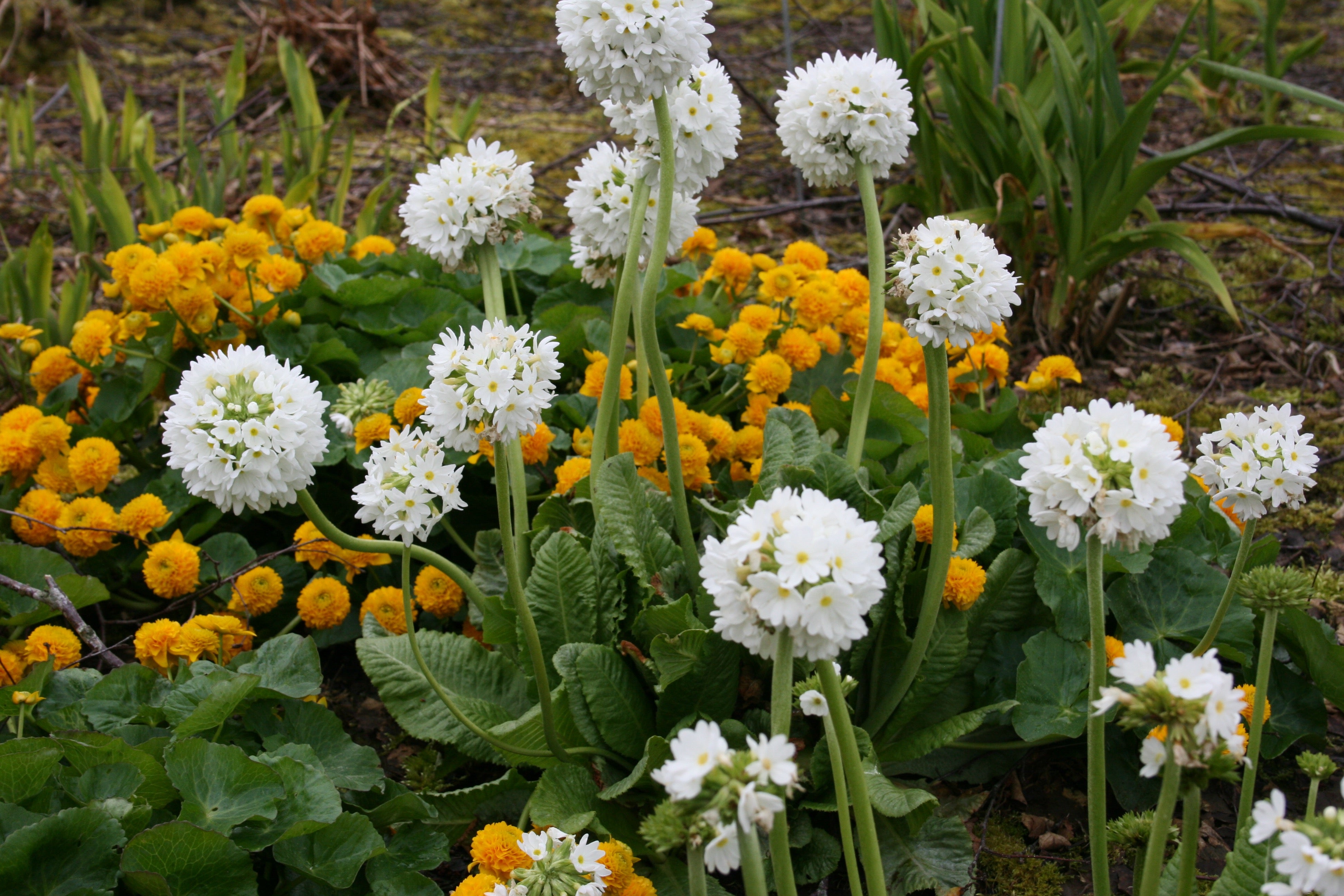Primula denticulata var. alba (De)
Approx. 0.5 litre pot
About this cultivar:
Primula denticulata var. alba (De) is a white variation of Primula denticulata.
Primula denticulata (De) is also known as the drumstick Primula. The flowers can be white, blue, pink, or red but are usually purple. Native to moist alpine regions of Asia, from Afghanistan to south eastern Tibet, Burma and China. The specific epithet denticulata means 'small-toothed' and refers to the serrated leaf edges. Guess what again? It has gained the Royal Horticultural Society's Award of Garden Merit. Do I need to …..beat the drum ….for this plant? I think it does it itself!
- Position: Full sun, Partial shade, full shade
- Soil: Almost any soil, grows well in Ballyrobert
- Flowers: April, May, June
- Other features: Royal Horticultural Society Award of Garden Merit (RHS AGM)
- Hardiness: H6 - Hardy in all of UK and northern Europe (-20 to -15°C), Fully hardy, grows well in Ballyrobert
- Habit: Clump forming
- Foliage: Semi Evergreen
- Height: 10 - 25 cm (0.3 - 0.8 ft)
- Spread: 10 - 25 cm (0.3 - 0.8 ft)
- Time to full growth: 2 to 5 years
- Plant type: Herbaceous Perennial
- Colour: Green, white
- Goes well with: --
About this genus:
Primula (prim-u-la or pri-mul-a) is a genus of mainly herbaceous flowering plants in the primrose family (Primulaceae). The word primula is the Latin feminine diminutive of Primus, meaning first (prime), applied to flowers that are among the first to open in spring. Thus the Latin name translates as 'First flower'.
Primula include the familiar wildflower of banks and verges, the primrose (P. vulgaris). Other common species are P. auricula (auricula), P. veris (cowslip) and P. elatior (oxlip). They have been extensively cultivated and hybridised - in the case of the primrose, for many hundreds of years. Primulas are native to the temperate northern hemisphere, south into tropical mountains in Ethiopia, Indonesia and New Guinea, and in temperate southern South America. Almost half of the known species are from the Himalayas.
Primula is a complex and varied genus, with a range of habitats from alpine slopes to boggy meadows. The diversity of the primrose and its ability to hybridise fascinated Charles Darwin, who bred them. He was the first to point out that some flowers were pin-eyed, with a prominent style, while others were thrum-eye, with long stamens. He realised that pollen was picked up from the stamens of one flower and deposited on the style of the other by visiting bees. Short-stamened flowers tend to be self-fertile, while those with long-stamens need cross pollination, providing genetic diversity. Darwin presented a paper on these differences (described as a dimorphic condition) to the Linnean Society in 1862.
Plants bloom mostly during the spring, with flowers often appearing in spherical umbels on stout stems arising from basal rosettes of leaves; their flowers can be purple, yellow, red, pink, blue, or white. Most of the Primulas we have are cold hardy and tolerate quite a bit of moisture - some might even prefer waterlogged areas. They can grow in full-sun (with enough water), part shade and in almost full shade.


